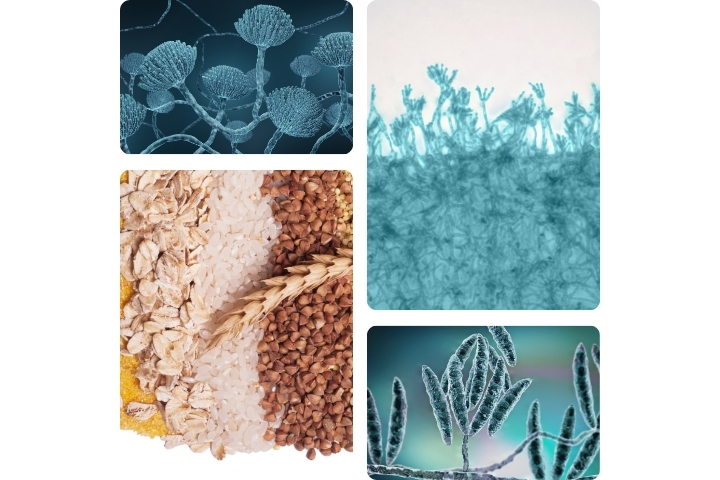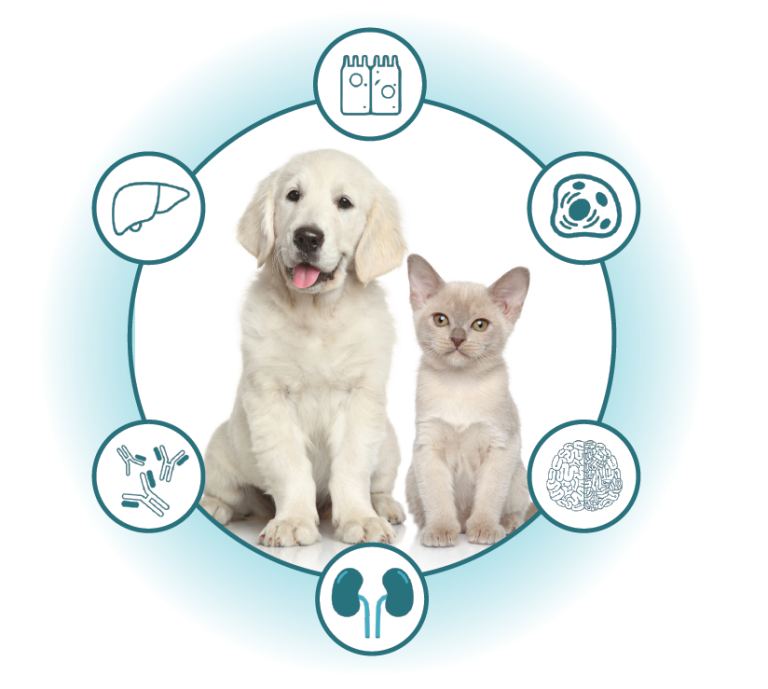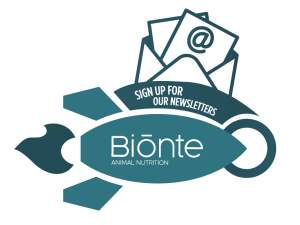Introduction
In recent years, the number of companion animals has increased significantly worldwide; and with it, the attention paid to their care and well-being. In this context, obtaining nutritious, high-quality food products for these animals entails an enormous responsibility for the feed production industry. Maintaining innocuousness and ensuring food safety is essential (Kepinska and Biel, 2021). There are various microbiological risks that can affect food quality, among which bacteria, fungi, and their toxins stand out; the latter being a major problem for animal and human health.
Mycotoxin contamination in feed is a serious health threat to pets. Mycotoxins are harmful metabolites meanly produced by the three principal groups of fungi: Penicillium, Aspergillus and Fusarium.

Just like in forages, mycotoxins can be generated in cereals before, during, and after harvest, under different environmental conditions. The pet food industry uses cereals and cereal by-products as inputs to obtain digestible starch through an extrusion process. However, despite this process involving high pressures and temperatures, it is not capable of inactivating mycotoxins. Therefore, these contaminants pose a significant risk to pet health, raising concerns among pet owners (Grandi et al., 2019; Antonissen et al., 2017).
The European Commission has established maximum permissible levels of mycotoxins in animal feed. However, the risk of causing damage to the animals has not been completely eliminated, as even continuous exposure to low doses of certain mycotoxins could lead to serious health problems (Kepinska and Biel, 2021).
Depending on the mycotoxin nature, the effects may be carcinogenic, teratogenic, immunosuppressant, mutagenic, hepatotoxic, neurotoxic or nephrotoxic. Below is a compilation of the effects of these toxins reported so far in dogs and cats.

Effects of mycotoxins on dogs
Even though there are few reports about mycotoxins toxicity in domestic animals, the presence of these contaminants in their feed has been widely confirmed (Grandi et al., 2019).
Aflatoxins
The dog is one of the domestic species more sensitive to intoxication by aflatoxins, due to the low action of the enzyme glutathione S-transferase in this specie, which plays a fundamental role in the detoxification of these mycotoxins (Martinez et al., 2021).
Clinical aflatoxicosis in dogs can affect to:
- Nervous system
- Depression
- Seizures
- Stupor
- Vocalization
- Coma
- Digestive system
- Vomiting
- Anorexia
- Hematemesis
- Melaena
- Hematochezia
- Hemodynamics
- Ascites
- Dehydration
- Jaundice
- Peripheral edema
- Hemorrhages in mucous membranes
Most of the reported lesions occur in the liver, and coagulation abnormalities are also recorded (Martinez et al., 2021). In females, an association has been established between feed contamination with aflatoxins and the development of breast cancer (Frehse et al., 2015).
Zearalenone
Dogs are also considered a particularly sensitive specie to zearalenone. This mycotoxin, which is produced by the fungi genera Fusarium, is structurally similar to natural estrogens. Thereby, zearalenone inclusion in feed can cause considerable changes in the reproductive system (Kepinska and Biel, 2021). In females, zearalenone can trigger oviduct and uterus edematization. While in males, the action of this mycotoxin is tightly connected to the reduction of spermatogenesis (Witaszak et al., 2020).
In addition, considering zearalenone as an endocrine disruptor, it has been shown that continued exposure to low doses can act by promoting breast cancer and other hormone-dependent tumors, especially in females (Ruiz-Suarez et al., 2015).
Trichothecenes
This group includes small amphipathic molecules that passively move through cell membranes. They are easily absorbed into the integumentary and gastrointestinal systems and, in turn, have a dynamic action on rapidly proliferating tissues.
The most important mycotoxins in this group are deoxynivalenol (DON) and toxins T-2 and HT-2. The most important and studied is DON, since its effects attract attention in public health (Kepinska and Biel, 2021). These types of mycotoxins can cause loss of appetite and weight, vomiting, diarrhea, and even gastrointestinal bleeding (Witaszak et al., 2020).
Fumonisins
Fumonisins are a group of around 25 mycotoxins produced by the fungi genera Fusarium. The main fumonisins are fumonisin B1 (FB1) and fumonisin B2 (FB2) (Kepinska and Biel, 2021). These mycotoxins can disrupt the cellular sphingolipids metabolism and, in the same way, activate apoptotic, necrotic and cellular hyperplasia related pathways.
The information on the effects of fumonisins on dogs is very limited. However, it is suggested that fumonisins inclusion in feed can involve hepatotoxic and nephrotoxic risks, commonly found in acute intoxication, or they can cause immunosuppression, in case of chronic exposure (Gazzotti et al., 2015).
Ochratoxins
These mycotoxins are commonly produced by the fungi genera Aspergillus and Penicillium. As observed in other species, the target organ of these mycotoxins is the kidney. Dog intoxication by ochratoxins can present clinical symptoms such as anorexia, polyuria, polydipsia, anxiety, prostration, restlessness or weakness (Zain, 2011).

Effects of mycotoxins on cats
Aflatoxins
In the bibliography, has been reported several cases of canine aflatoxicosis, conversely, it was no registered cases related to feline aflatoxicosis. However, the detection of aflatoxins in pet food is a common reason for deciding to recall a feed, also in the case of cats (Grandi et al., 2019).
Zearalenone
In cats, zearalenone is a toxin that disrupts reproductive hormone function by stimulating the overexpression of estrogen receptors, leading to problems similar to those mentioned above in dogs. However, information about the specific effects of zearalenone in cats remains quite limited (Knutsen et al., 2017).
Trichothecenes
Cats are very sensitive to this group of mycotoxins, with T-2 toxin-induced hematotoxicity being particularly notable (Glanemann et al., 2023). Several studies have recorded high levels of these mycotoxins, especially T-2 and HT-2, in cereals and pet food. In 2021, an outbreak of severe pancytopenia was detected, caused by the presence of high levels of T-2 and HT-2 in feed, which led to the death of several cats (Glanemann et al., 2023). Another case reported that intravenous injections of T-2 in cats, led to hypovolemia and death (Devegowd et al., 2000).
Fumonisins
Just like in dogs, there are few reports of this type of mycotoxins affecting cat health (Witaszak et al., 2020). However, it should be noted that they are toxic molecules commonly found in raw materials, which are particularly stable at high temperatures (Grandi et al., 2019).
Ochratoxins
In the same way, these toxins stand out for mainly affecting the kidneys of cats. Thus, ochratoxins alter the nephrotic structure and function triggering different clinical symptoms, such as polyuria, polydipsia and prostration (Zain, 2011).


Conclusion
Mycotoxin contamination is a huge challenge within the pet food manufacturing industry. Contaminated raw materials can end up in these feeds and lead to poisoning in pets, depending on the time and dose of exposure (Grandi et al., 2019). Therefore, control and prevention strategies must be followed to detect these toxic compounds early and prevent them from affecting the health of our pets.


